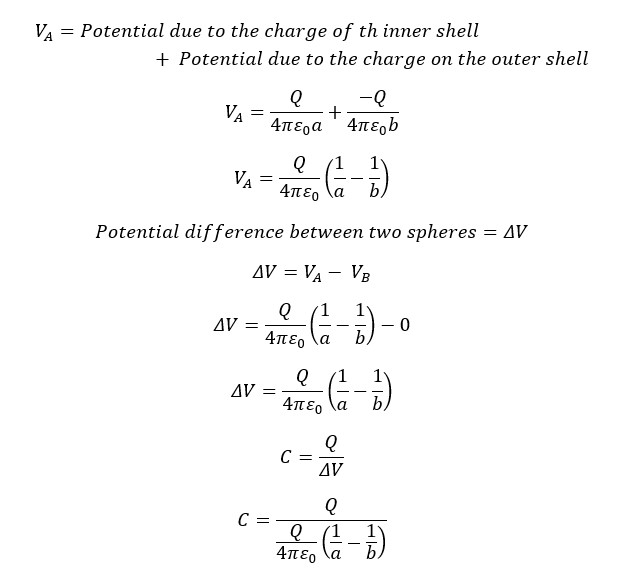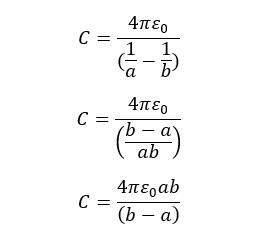More results...


Capacitors are electrical devices that can store and release electric energy when necessary. A capacitor is a two-terminal device that consists of two plates of conductor plates that are separated by a small distance.
This distance between two plates is filled by a vacuum or dielectric material. The capacitance of a capacitor is the ability to collect and store energy as electrical charges. Mathematically, when an object is given +Q charge if the voltage is increasing by V,

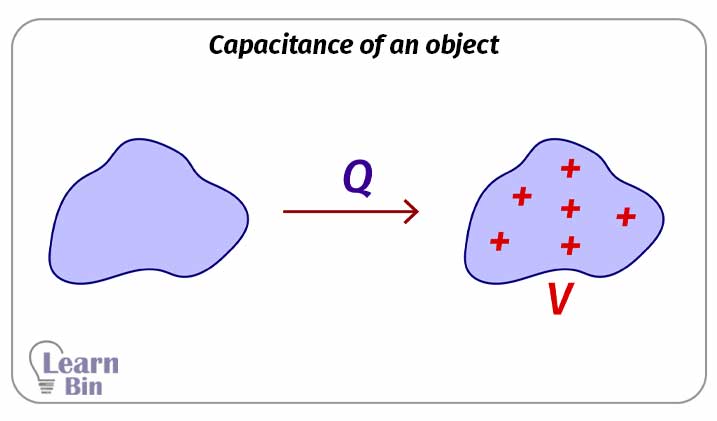
Where,

The capacitance of a capacitor does not depend on its charge or the external voltage. It depends on the distance between the two conductor plates, the area of the plates, and the dielectric constant of the material-filled interspace distance of the two plates.
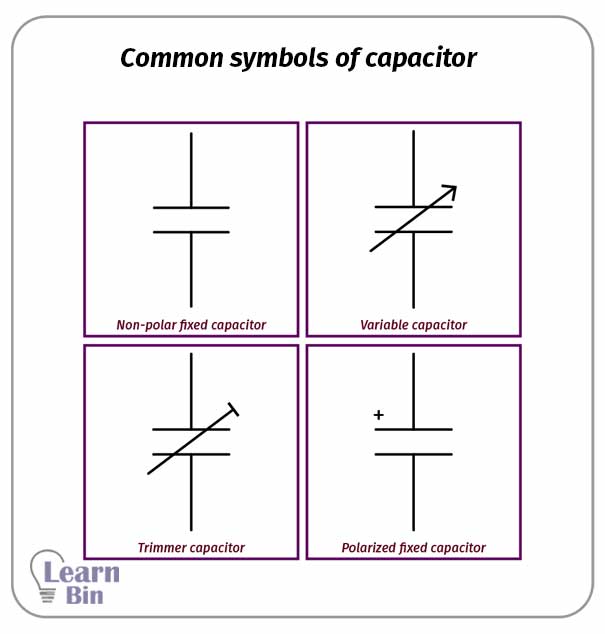
A capacitor is simply charged by connecting to a battery. The capacitor is connected to the corresponding terminals of the battery. (The positive terminal of the battery is the positive terminal of the capacitor).
In capacitors, the terminals are marked with positive (+) and negative (-) signs. If not, the longer terminal is usually the positive terminal and the shorter one is the negative one. When the battery is connected to the capacitor, electrons are collected to the negative terminal of the capacitor.
Thus, a conductor plate is charged as negative. As two plates of the capacitor are separated by a very small distance, the electrons in the negative plate will repel the electrons in the positive terminal. Therefore, a positive charge is induced in the other conductor plate (positive terminal) on the capacitor. Thus, the two terminals of the capacitor are charged as positive and negative.
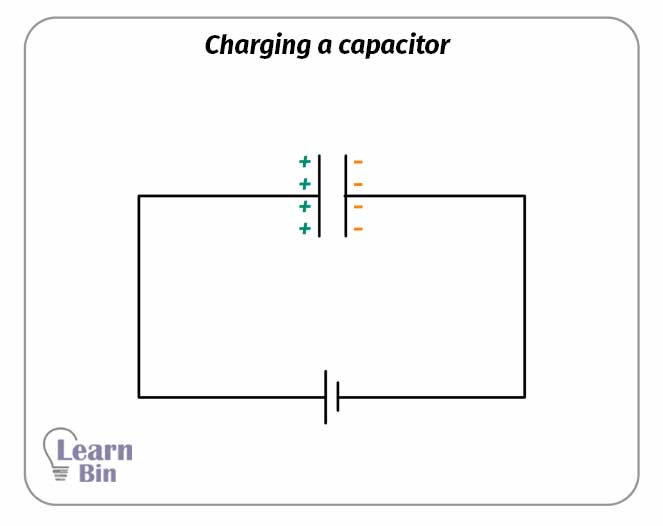
Capacitors do not collect and store electric charges from external sources. It will induce positive and negative charges in two terminals due to external voltage differences. If the positive terminal has a +Q charge, the negative terminal has a -Q charge.
A capacitor can simply be discharged by connecting to a load, without a source voltage. The electrons in the negative terminal of the capacitor will move towards the positive terminal through the load. Due to the flow of electrons, the capacitor acts as a voltage source for a short period of time. After the potential of the two plates becomes zero, the electron flow stops.
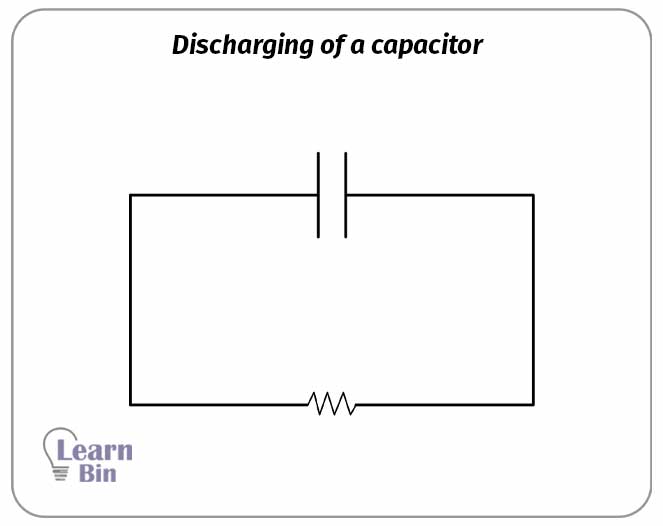
It does not take a notable time to charge or discharge a capacitor. The capacitor is a passive device and a direct current does not pass through a capacitor.
Parallel plate capacitors have two conductor plates with the same surface area that are separated by a dielectric material. Metals with high conductivity such as aluminum, copper, and silver are used as the conductor plates in capacitors. Paper, Ceramic, or rubber are used as dielectric materials in capacitors.
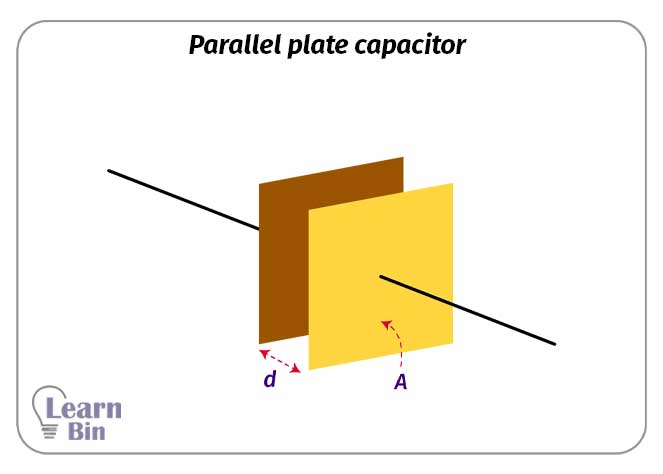
If the surface charge density of the conductor material is σ, the permittivity of the dielectric material is ε, and the electric field intensity around the conductor plates is E, the equation for the capacitance of a parallel plate capacitor can be derived as follows.
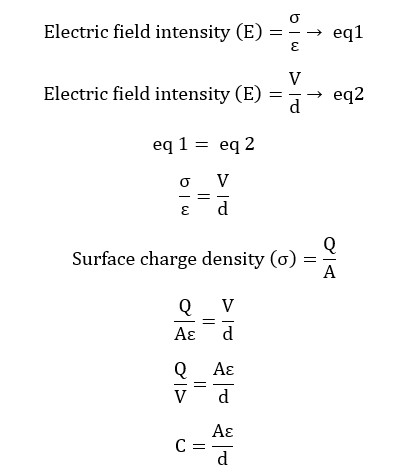
Where,
The capacitance of a capacitor is measured in Farads (F), Coulombs per volt.
A single conductor ball or two conductor spheres with different radii are used as a capacitor. Either the inner sphere or the outer sphere can be used as the positive or negative terminal.
When a conductor sphere with a radius of R is given a +Q charge, the capacitance can be calculated as follows.
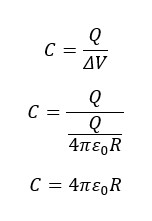
Where,
In a spherical capacitor, either inner shell or outer shell can be given a charge. When a particular shell is charged, the other shell is earthed. Let's assume that there is a spherical capacitor that has outer and inner spheres of hollow conductors. The radii of the inner and outer spheres are a and b respectively.
To find the capacitance we need to find the potential difference between the two spheres. Let's assume that the outer shell is given a +Q charge when the inner shell is earthed. +Q charge will distribute the inner and the outer surfaces of the outer shell. If the charge collected in the inner surface of the outer shell is +q, a -q charge is induced on the outer surface of the inner shell.

The potential of the inner shell (VA) is the sum of the potential due to the induced charge of the outer surface of the inner shell (-q) and the potential due to the charge of the outer shell (+Q). Since the inner shell is earthed VB is zero.
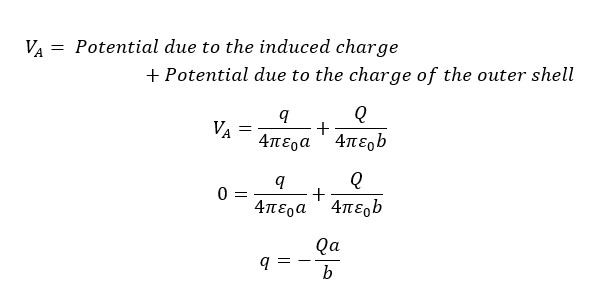
This shows that the induced charge on the inner shell is not equal to the charge on the outer shell. If the potential of the outer shell is VA, it is the sum of the potential due to the charge on the outer shell and the potential due to the charge on the inner shell.
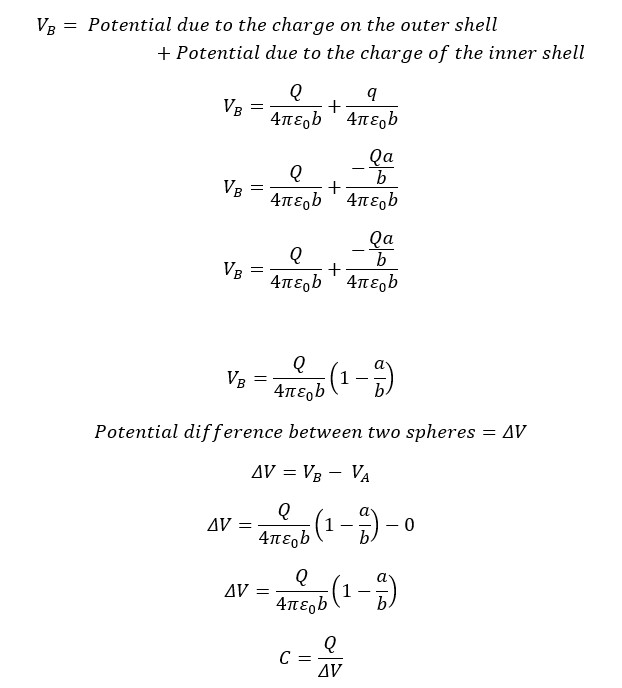
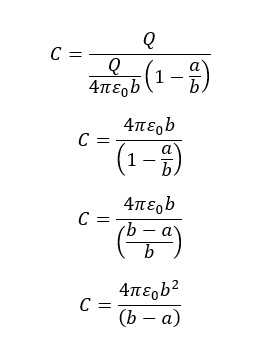
The outer shell is earthed and the inner shell is given a +Q charge. The inner shell of the capacitor can be considered as a pointed charge. Therefore, a -q charge is induced on the inner surface of the outer shell. If the potential on the outer shell is VB, VB is the sum of the potential due to the charge of the inner shell and the potential due to the induced charge on the outer shell. Since the outer shell is earthed, VB is zero.
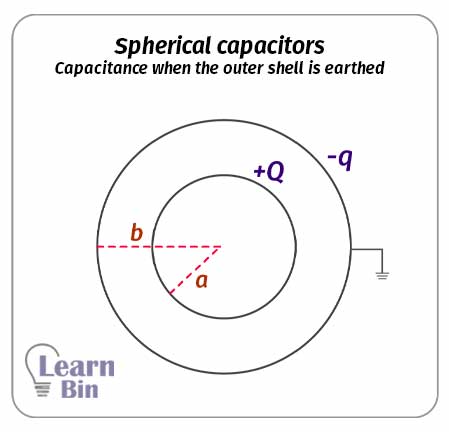
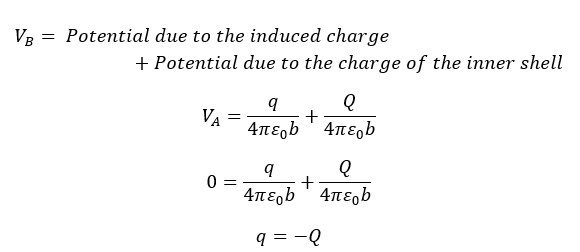
Therefore, the charge on the outer sphere and the inner sphere is the same. If the potential on the inner shell is VA, it is the sum of the potential due to the charge of the inner shell and the potential due to the charge of the outer shell.
